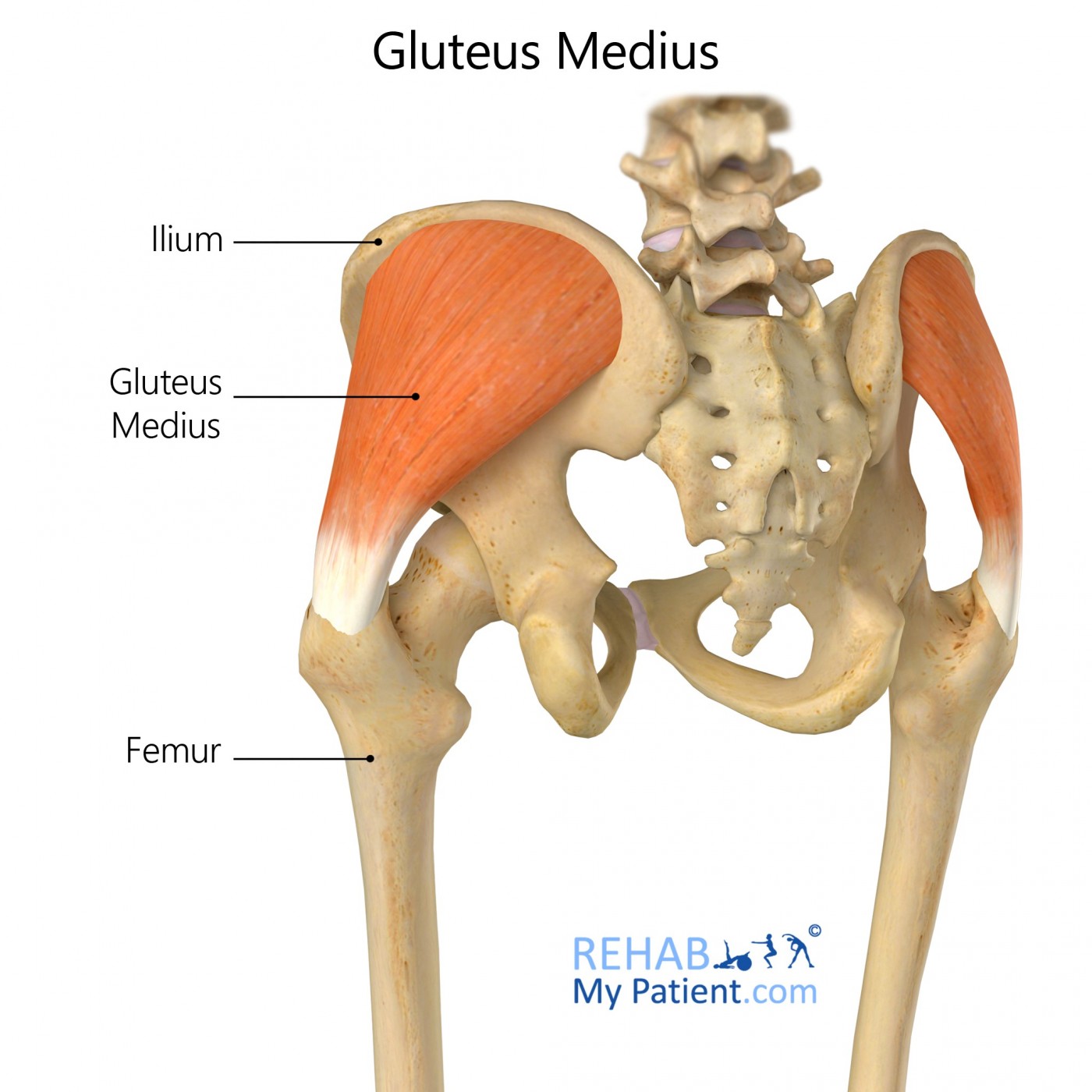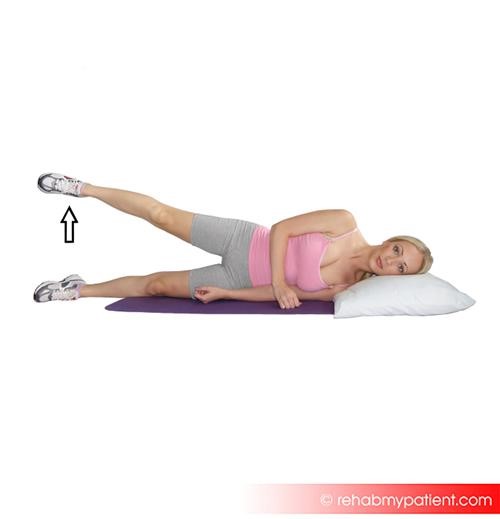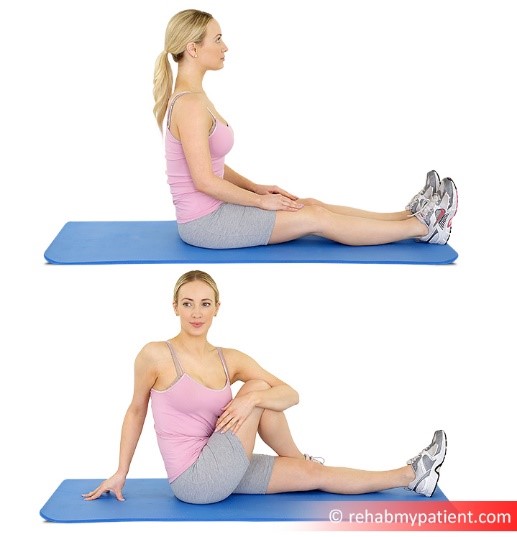
General information
Gluteus medius is a large, broad, fan-shaped muscle situated posteriorly in the hip. It makes up the gluteal region muscles, along with the gluteus maximus, gluteus minimus and tensor fasciae latae muscles.
Literal meaning
The middle muscle of the buttocks.
Interesting information
The anterior portion of this muscle produces thigh internal rotation and thigh abduction. Pelvic stabilisation when walking or standing is produced by the gluteus medius muscle in its entirety.
The fan shape of the muscle coming from its broad superior portion and narrow inferior portion as the muscle reaches its insertion point.
The only aspect of the gluteus medius not covered by the Gluteus maximus is the antero-superior third which is also the safest area to apply dorso gluteal intramuscular injections.
Origin
Gluteal surface of ilium (between anterior and posterior gluteal lines).
Insertion
Lateral aspect of greater trochanter of femur.
Function
Hip joint: Thigh abduction, thigh internal rotation (anterior part); Pelvis stabilization.
Nerve supply
Superior gluteal nerve (L4-S1).
Blood supply
Deep branch of superior gluteal artery, trochanteric anastomosis.

Relevant research
The research shows a reduction in gluteus medius activity when a person with patellofemoral syndrome runs.
Also, in people experiencing lower back pain, gluteus medius dysfunction has been shown to increase spinal loading and reduce spinal stability. Weakness and tenderness of the gluteus medius are common in people with lower back pain.
Semciw, A., Neate, R., & Pizzari, T. (2016). Running related gluteus medius function in health and injury: A systematic review with meta-analysis. Journal of electromyography and kinesiology: official journal of the International Society of Electrophysiological Kinesiology, 30, 98–110.
Sadler, S., Cassidy, S., Peterson, B., Spink, M., & Chuter, V. (2019). Gluteus medius muscle function in people with and without low back pain: a systematic review. BMC musculoskeletal disorders, 20(1), 463.
Cooper, N. A., Scavo, K. M., Strickland, K. J., Tipayamongkol, N., Nicholson, J. D., Bewyer, D. C., & Sluka, K. A. (2016). Prevalence of gluteus medius weakness in people with chronic low back pain compared to healthy controls. European spine journal: official publication of the European Spine Society, the European Spinal Deformity Society, and the European Section of the Cervical Spine Research Society, 25(4), 1258–1265.
Gluteus medius exercises
Strengthening:

Hip abduction gluteus medius side-lying
Lying on one side, lift your leg upwards, keeping it straight. This position can either be held for a few seconds or the leg can be raised and lowered repeatedly.
Stretching:

Glute stretch sitting
Sitting on the floor, place both legs straight out in front of you. Then bring one knee up towards the chest and cross this leg over the straight one still on the floor. Your crossed foot should be near your opposite knee. Placing your hand over your bent knee, twist your body to the side of your bent leg to create the stretch.
Sign Up
Sign up for your free trial now!
Get started with Rehab My Patient today and revolutionize your exercise prescription process for effective rehabilitation.
Start Your 14-Day Free Trial